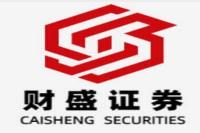Unlocking Urban Mobility: A Deep Dive into China's "Four-Net Integration" Strategy
Meta Description: Explore China's ambitious "Four-Net Integration" strategy, designed to revolutionize urban mobility by seamlessly connecting high-speed rail, intercity rail, suburban rail, and urban rail networks. This article delves into the strategy's key elements, benefits, and challenges, providing insights into its impact on urban development and citizen lives.
The pulse of any thriving metropolis beats to the rhythm of its transportation system. In China, where rapid urbanization has brought unprecedented challenges, the government has strategically unveiled a bold plan to optimize urban mobility: the "Four-Net Integration" strategy. This visionary initiative, outlined in the "Five-Year Action Plan for Deepening the Implementation of People-Oriented New Urbanization," aims to weave together the country's high-speed rail, intercity rail, suburban rail, and urban rail networks, creating a seamless and efficient transportation ecosystem. The goal? To unlock urban potential, enhance connectivity, and ultimately, improve the quality of life for millions of citizens.
This article delves deep into the intricacies of China's "Four-Net Integration" strategy, dissecting its components, analyzing its potential impact, and exploring the challenges it faces. We'll examine how this strategy is shaping urban development, influencing commuting patterns, and transforming the way people move across cities and regions. Prepare to be transported into the future of urban mobility as we unpack the complexities and examine the implications of this ambitious initiative.
The "Four-Net Integration" Strategy: Weaving a Seamless Urban Fabric
At the heart of this transformative strategy lies the concept of "Four-Net Integration," a philosophy designed to break down the silos between various transportation networks and create a unified, interconnected system. Imagine a world where you can seamlessly switch from a high-speed train to a suburban rail line, then hop onto a metro, all without a hitch. This is the vision that drives the "Four-Net Integration" strategy.
Here's a breakdown of the key elements:
- High-Speed Rail: China's high-speed rail network, the world's largest, plays a crucial role in connecting major cities and facilitating long-distance travel. This network acts as the backbone of the "Four-Net Integration" strategy, serving as a gateway to other transportation modes.
- Intercity Rail: Intercity rail lines, which connect cities within a metropolitan area, provide a crucial link between major urban centers. Their integration with high-speed rail and other networks enables efficient commuting and regional connectivity.
- Suburban Rail: Serving as a vital link between urban centers and surrounding suburbs, suburban rail provides a cost-effective and convenient transportation alternative, reducing congestion on roads and facilitating urban sprawl.
- Urban Rail: Comprising metro lines, light rail, and trams, urban rail networks provide efficient, high-capacity transit within cities, easing traffic congestion and enhancing access to employment centers.
The Impact of "Four-Net Integration": Transforming Urban Landscapes
The "Four-Net Integration" strategy is far more than just a transportation initiative. It has the potential to reshape urban landscapes, influencing everything from urban planning to economic development. Here's how:
1. Enhancing Connectivity:
The strategy is all about creating a seamless flow of people and goods. By connecting different transportation networks, it eliminates the need for multiple transfers, saving time and money for commuters. This integrated network also opens up opportunities for businesses, allowing for efficient movement of goods and services across cities and regions.
2. Promoting Sustainable Urban Development:
"Four-Net Integration" actively promotes sustainable urban development by encouraging the shift from private vehicles to public transportation. By providing efficient and accessible public transportation options, the strategy reduces traffic congestion, air pollution, and carbon emissions, creating a cleaner and healthier urban environment.
3. Fostering Economic Growth:
The integrated transportation network fuels economic growth by facilitating inter-city connections and enabling efficient movement of goods and services. Businesses benefit from improved access to markets, labor, and resources, leading to increased investment and economic activity.
4. Creating More Liveable Cities:
The "Four-Net Integration" strategy contributes to the creation of more liveable cities by reducing traffic congestion, improving air quality, and providing residents with convenient and affordable transportation options. This leads to increased quality of life, attracting talent and investment, and ultimately, making cities more desirable places to live and work.
Challenges and Opportunities: Navigating the Path to Integration
While the "Four-Net Integration" strategy holds immense promise, its implementation presents a unique set of challenges and opportunities.
1. Coordination and Collaboration:
The success of the strategy hinges on seamless coordination and collaboration between different stakeholders, including government agencies, transportation authorities, infrastructure providers, and private sector partners. Effective collaboration is essential to ensure smooth integration, efficient operations, and a unified approach to planning and development.
2. Funding and Investment:
The "Four-Net Integration" strategy requires significant financial investment to upgrade existing infrastructure, build new lines, and implement advanced technologies. Securing adequate funding and attracting investment from both public and private sources will be crucial for its successful implementation.
3. Technological Advancement:
The strategy demands the integration of advanced technologies, such as smart ticketing systems, real-time information displays, and data analytics platforms. These technologies can enhance efficiency, improve passenger experience, and optimize network operations. However, the development and implementation of these technologies require significant investment and technical expertise.
4. Public Engagement:
Public engagement is crucial to the success of the "Four-Net Integration" strategy. It's essential to involve citizens in the planning process, address their concerns, and ensure that the strategy meets their needs.
The Future of Urban Mobility: A Vision for a Connected World
The "Four-Net Integration" strategy is a testament to China's commitment to sustainable urban development and the creation of a more efficient and interconnected transportation system. This ambitious initiative is transforming urban landscapes, enhancing connectivity, and paving the way for a future where mobility is no longer a barrier but a catalyst for progress.
As the strategy continues to unfold, it's crucial to monitor its progress, address challenges, and leverage opportunities to maximize its impact. The success of "Four-Net Integration" will depend on the collaboration of stakeholders, the allocation of adequate resources, the adoption of innovative technologies, and the engagement of citizens.
FAQs: Unpacking the "Four-Net Integration" Strategy
1. How does "Four-Net Integration" benefit commuters?
The strategy benefits commuters by offering a seamless and efficient transportation experience. It eliminates the need for multiple transfers, saves time and money, and provides convenient access to diverse destinations.
2. What are the environmental benefits of "Four-Net Integration"?
The strategy promotes sustainable urban development by reducing traffic congestion, air pollution, and carbon emissions. It encourages a shift from private vehicles to public transportation, contributing to a cleaner and healthier urban environment.
3. How does "Four-Net Integration" impact urban planning?
The strategy influences urban planning by encouraging the development of transit-oriented communities, promoting mixed-use development, and optimizing land use patterns to maximize accessibility and connectivity.
4. What are the key challenges in implementing "Four-Net Integration"?
The key challenges include securing adequate funding, coordinating between different stakeholders, adopting advanced technologies, and engaging the public in the planning process.
5. How does "Four-Net Integration" contribute to economic growth?
The strategy fosters economic growth by facilitating inter-city connections, enabling efficient movement of goods and services, and attracting investment in transportation infrastructure and related industries.
6. What are the future implications of "Four-Net Integration"?
The strategy has the potential to transform urban mobility, create more livable cities, and drive sustainable development. Its success depends on continued investment, collaboration, technological advancements, and public engagement.
Conclusion: A Bold Vision for the Future of Urban Mobility
China's "Four-Net Integration" strategy signifies a bold vision for the future of urban mobility. This ambitious initiative, by weaving together high-speed rail, intercity rail, suburban rail, and urban rail networks, is poised to reshape urban landscapes, enhance connectivity, and ultimately, create more liveable and sustainable cities.
The journey towards realizing the full potential of "Four-Net Integration" will require a concerted effort from stakeholders, including government agencies, transportation authorities, infrastructure providers, and the private sector. By embracing collaboration, investing in innovation, and engaging with citizens, we can unlock the transformative power of this strategy and pave the way for a future where mobility is no longer a barrier but a catalyst for progress.



